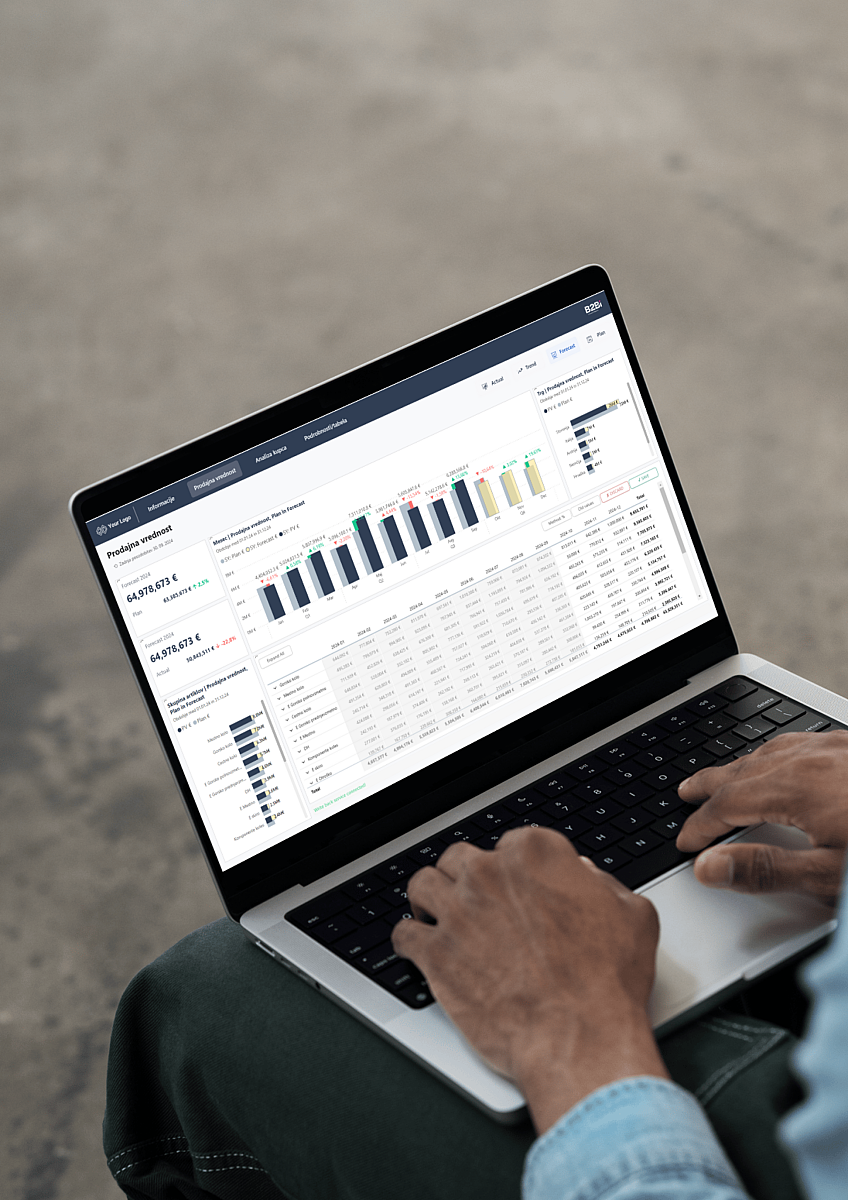Data Analytics vs. Business Analytics
Differences, Similarities, and Roles in modern Business Environment

With carefully designed reports, you can get complete insight into your business data with just a few visualizations.

Data Analytics
Data analytics is the process of collecting, cleaning, processing, and analyzing large amounts of data to gain insights that are useful for decision-making. It is a technical field where key knowledge areas include programming, statistics, and the use of advanced analytical tools. Data analysts use various technologies such as SQL, Python, R, as well as advanced data visualization tools like Power BI, Tableau, or Excel to process and present data in an understandable way.
The main objectives of data analytics are:
-
Data processing and analysis: Collecting raw data from various sources, transforming, and analyzing it to extract meaningful information.
-
Data visualization: Preparing visualizations and interactive dashboards that provide real-time insight into key company metrics.
-
Support for business analytics: Data analytics enables business analysts to better understand data and use it in their tasks, such as improving business processes or forecasting future trends.

Business Analytics
Business analytics is focused on understanding business needs and optimizing business processes using data. Business analysts work with various departments within a company to identify opportunities for process improvement, increased efficiency, or cost reduction. Their work centers on interpreting the data gathered by data analysts and using that data to develop strategies that enhance business performance.
The main objectives of business analytics are:
-
Improvement of business processes: Business analysts study process diagrams, identify bottlenecks within a company, and propose solutions for optimizing workflows.
-
Support for strategic decision-making: Based on data analysis, business analysts prepare reports, recommendations, and proposals that support higher-level decision-making within a company.
-
Visualization of results: Business analytics often involves creating process diagrams, workflow models, or business frameworks that companies use to optimize their operations.
Differences
|
Data Analytics |
Business Analytics |
|
|
Focus and Goals |
Focuses on the technical processing of data. It examines how to collect, process, and analyze data to gain insights and visualize information. |
More oriented toward business needs, where the main goals are to improve processes, strategies, and decision-making using data-driven insights. |
|
Approaches and Methods |
Uses advanced technical methods such as statistics, machine learning, and programming to derive meaningful information from large volumes of data. The result is processed data, analyses, and visualizations such as dashboards. |
Uses data to develop business strategies and optimize processes. Works with process diagrams, workflow analysis, and creates recommendations that lead to business-level improvements. |
|
Output |
Produces processed data and visualizations that facilitate better data understanding. This includes dashboards, reports, and interactive presentations. |
Creates process diagrams, business models, and recommendations that help improve business operations and decision-making. |
Similarities
Although these fields are different, data and business analysts share some commonalities:
-
Collaboration: Both roles work closely together since business analysts rely on the data insights provided by data analysts. This collaboration ensures that data is effectively used to enhance business performance.
-
Use of Data: Both roles depend on data as a primary source of information. While data analysts process and prepare data, business analysts interpret it within the context of business needs.
-
Pursuit of Improvement: Both aim to identify opportunities for improvement—data analysts by obtaining accurate data, and business analysts by implementing changes in business operations.
Data analytics and business analytics are two key disciplines that complement each other and together enable better business decision-making. While data analysts process and analyze data, business analysts use this data to optimize business processes and develop strategic decisions. Through this collaboration, companies gain precise insights and improve their competitiveness in the market.
